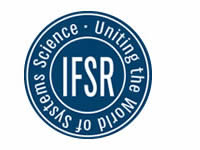IFSR Newsletter 1997 Vol. 16 No. 1 April
Ernesto Grün
Lavalle 1447/5 K.
Buenos Aires, Argentina
In the IFSR-Newsletter No. 40 (March 1996) appeared a small article by my friend Charles Francois about “‘Aura’ and the Wasa Story”. This story is in some ways similar (isomorphic ?) to what happened with the Corpus Juris Civilis. It seems to me to be a perfect illustration, in the realm of law, of the concept of “aura”, i.e. as defined it [1]: “The set of traces, and/or contraints left over by a system after the end of its functional existence”. The conception of “aura” was originally conceived by Henri Prat (“Le Champ unitaire en Biologie”) and, in my opinion, has many other examples and applications in law and politics.
Justinian I (483-565), emperor of the Roman empire, found the laws of the roman empire in great confusion. Many were out of date, some contradicted others, nowhere did a complete collection of them exist. Justinian appointed a commission to study the problem. The work of the commissioners resulted in the publication of the “Code of Justinian”. The first book, “Codex Constitutionum”, is a collection of decrees of the emperors; the “Digest”, or “Pandects”, a summary of 9.000 extracts from the opinions of the lawyers and judges who had interpreted these decrees, and the “Institutes”, a textbook. The “Institutes” stated legal principles in simple terms. A fourth book, the “Novels” (Novella constitutions), included the ordinances of Justinian after the codification. These four together constitute the “Code of Justinian”, or Civil Law (Corpus Juris Civilis). Justinian forbade any commentaries of his work which he wanted to be a universal system of law.
During the Middle Age, Roman law in western Europe fell into disuse and was replaced by canon low and by the customs of the different Germanic peoples that overran the empire. But in the late 11th century Roman law, especially its condification by the Corpus Juris was rediscovered and studied by scholars in northern Italy, especially at the University of Bologna. With the increased demand for trained experts in law and administration, students flocked to Bologna from all over Europe, and soon the revival of Roman law had spread to other centers of learning. Hence, Roman law came to influence the developing legal systems of the newly emerging nations of Europe. The system that resulted was called everywhere the Jus Civile.
Naturally the contents of the Corpus Juris had to be reinterpreted and adapted to fit the completely different social, economic, political and religious conditions of the time, a task accomplished by the “glossatores”, through a method known as the “mos italicus”.
Further information can be found in William Seagle’s “The Quest for Law“ (chapter 12.2). He speaks about the gost story of the resurrection of roman law.
And so, as with the Swedish warship, given favourable condition and/or circumstances a system could recuperate itself as a functional entity of a quite different kind.
[1] Francois Charles: Diccionario de Teoria General de Sistemas y Cibernectica’, Ed. Gesi, Buenos Aires, 1992.
